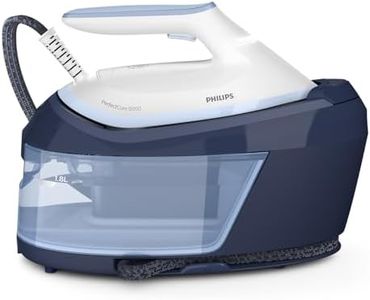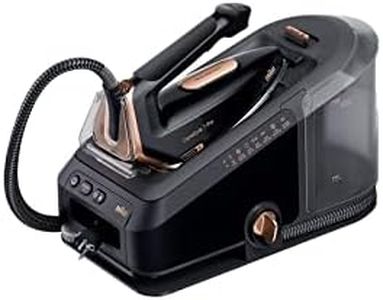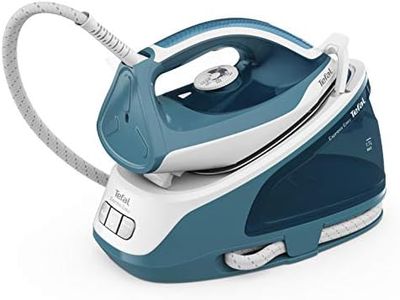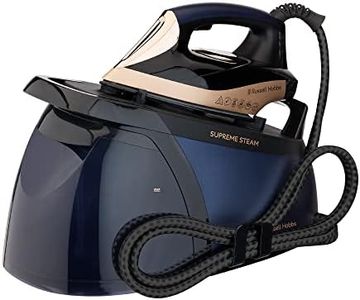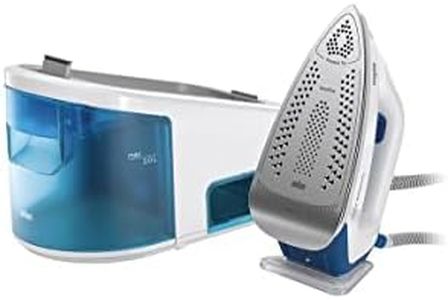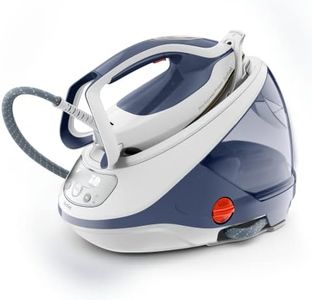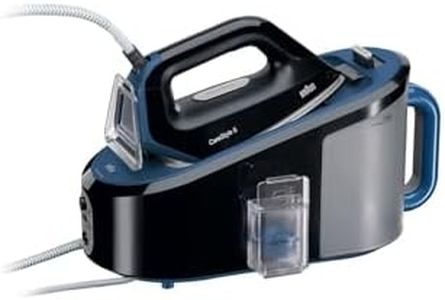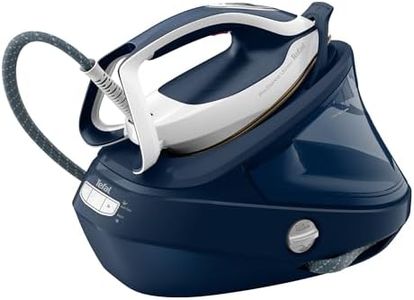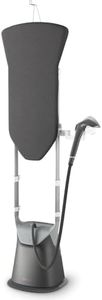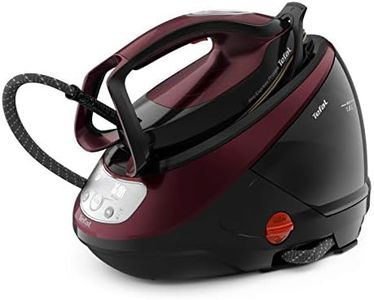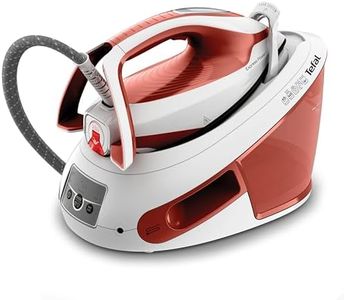We Use CookiesWe use cookies to enhance the security, performance,
functionality and for analytical and promotional activities. By continuing to browse this site you
are agreeing to our privacy policy
10 Best Steam Generator Irons
From leading brands and best sellers available on the web.Buying Guide for the Best Steam Generator Irons
Choosing a steam generator iron can make your ironing experience quicker, more effective, and less tiring. Unlike regular irons, steam generator irons use a separate water tank to create more powerful steam, helping you to remove wrinkles more easily and often speeding up the process. To find the right steam generator iron for you, it's important to consider how you use your iron, how often you do laundry, and what kinds of fabrics you normally handle. Understanding the key features and specs will help you select a model that fits your lifestyle and needs perfectly.Steam Pressure (Bars)Steam pressure is measured in bars and tells you how powerful the steam output will be. A higher bar rating means hotter, more forceful steam, which penetrates fabrics more deeply and removes wrinkles faster. Lower pressure (around 3–4 bars) is suitable for lighter fabrics and casual ironing, while medium pressure (5–6 bars) suits most families and mixed loads. High pressure (above 6 bars) is ideal if you iron large volumes, deal with difficult fabrics, or want maximum efficiency. Choose according to how tough your typical ironing jobs are.
Steam Output (g/min)Steam output is measured in grams per minute (g/min) and represents how much steam the iron produces continuously. A higher output means more effective wrinkle removal and faster work. Low outputs (around 80-100 g/min) are good for simple shirts and lighter clothes. Medium outputs (110-130 g/min) cover most daily needs and larger batches. Heavy-duty irons can produce more than 140 g/min for thick fabrics like jeans or linens. If you do lots of ironing or want faster results, choose a higher output.
Water Tank CapacityThe water tank holds the water used to generate steam. Larger tanks (1.5–2 liters or more) mean you can iron for longer without having to refill, which is handy for big loads of laundry. Smaller water tanks (less than 1.3 liters) make the machine lighter and more compact, which is better if storage space is limited and your ironing sessions are short. If you do lots of ironing at once or dislike stopping to refill, aim for a bigger tank.
Heat-up TimeHeat-up time is how quickly the iron is ready to use after you turn it on. Short heat-up times (under 2 minutes) are convenient if you need to iron in a hurry or want to save time. Longer heat-up times may not bother you if you always iron large loads or can plan ahead. Think about your typical routine—if you're often pressed for time, look for a model with a quick start.
Soleplate MaterialThe soleplate is the bottom of the iron. Common materials include stainless steel, ceramic, and non-stick coatings. Stainless steel glides smoothly and is durable, while ceramic distributes heat evenly and resists scratching. Non-stick coatings make cleaning easier and prevent fabric from sticking but may wear out over time. Your choice should be guided by what you value most—easy gliding, even heat, or low maintenance.
Anti-Scale SystemSteam generator irons can suffer from limescale build-up, especially if you have hard water. An anti-scale system helps prevent this, either by using an internal filter or by making it easy to clean out deposits. If you have hard water at home or want a hassle-free experience, consider an iron with a good anti-scale feature to keep it working well for longer.
Size and WeightSteam generator irons are bulkier than standard irons due to their separate water tanks. Lighter, more compact models are easier to move and store, while larger ones may offer more features or larger tanks. If you have limited space or need to carry the iron up and down stairs, a lighter model may be best. For those who prioritize extended ironing sessions, a bigger unit with a larger tank may be the right choice.
Cord Length and StorageCord length matters for how easily you can set up and move around your ironing board. A longer cord gives more flexibility, but it can also be harder to store. Some irons offer easy cord storage features, like automatic rewind or hook systems. If your ironing board isn’t close to a power socket, look for a longer cord; if tidiness matters, check cord storage solutions.


